
Photos: ADAC
After struggling through to the end of 2022, German motoring association ADAC has ended its F4 series after eight years. Where did it go wrong? And what does its demise say about the country’s single-seater future?
It is hard to believe now that in each of its first two seasons – 2015 and 2016 – the ADAC Formula 4 championship boasted an average of 36 entries per race. At some tracks the number of entries was so great that some didn’t even qualify to race.
Champions include Juri Vips, Theo Pourchaire, Ollie Bearman and Andrea Kimi Antonelli, and Formula 2 champions Mick Schumacher and Felipe Drugovich made their car racing debuts there. ADAC F4 has an impressive roll call of alumni.
Yet the final two rounds in 2022 had only 11 starters, despite Prema making an unscheduled return at the Nurburgring finale to win the titles. Only PHM Racing, Jenzer Motorsport and the one-car Sauter Engineering+Design were at all six rounds. Many of the series’ leading teams such as US Racing, R-ace GP and Mucke Motorsport have gradually packed their transporters for Italy or, in the case of Mucke, abandoned single-seaters completely.
ADAC’s decision was taken at the end of November, but for the teams “it was already clear when we were asking at the final round at the Nurburgring for the schedule and they were not coming out with anything” says Roland Rehfeld, team manager of PHM who came second in the driver and teams’ standings on its debut in 2022.
Series stalwart Van Amersfoort Racing had been present since the series’ inception in 2015. Its CEO Rob Niessink undoubtedly speaks for many participants and followers when he says: “I feel really sad that the Germans didn’t manage to keep that series alive. It was the hot series of Europe and they let it slip away completely.”
Stephan Sauter, the father/team principal/chief mechanic in the Swiss family-run Sauter team, also regrets the series’ demise.
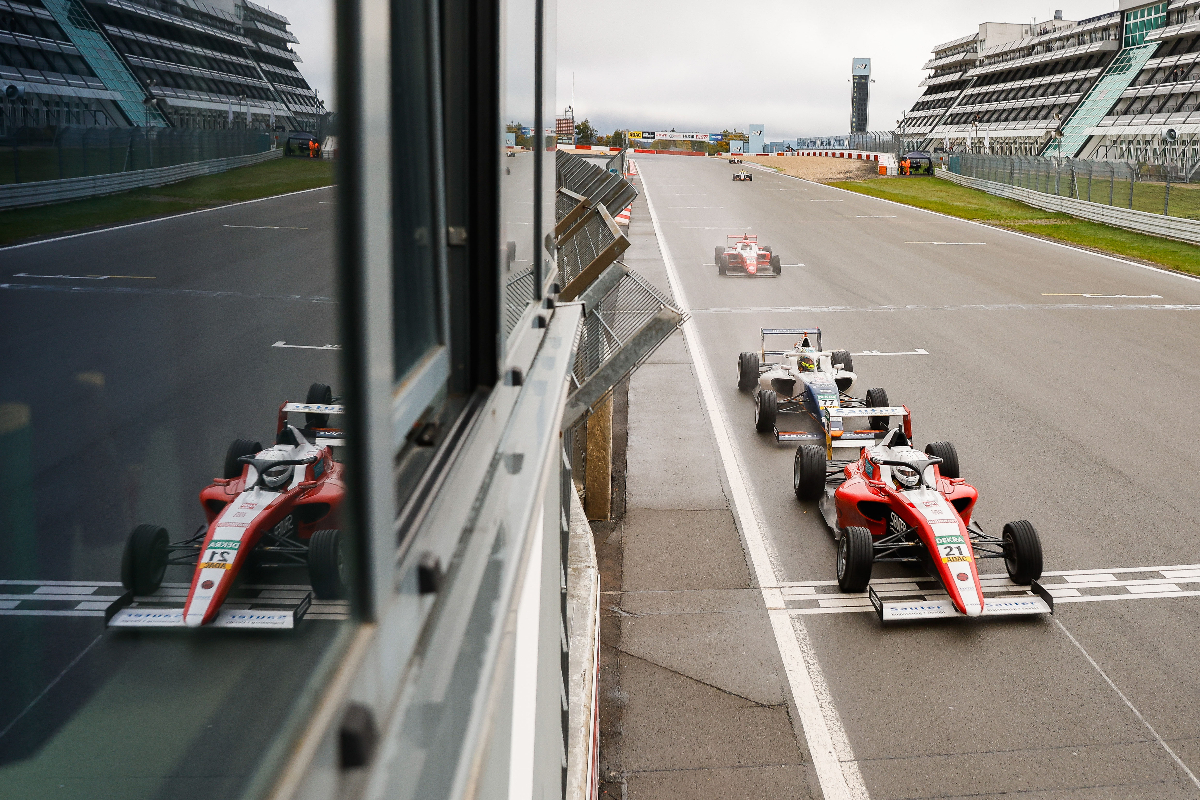 “For single-seaters in Europe it is a huge loss and the drivers are losing a great championship,“ he tells Formula Scout. “Overall, the level in ADAC F4 was very high.”
“For single-seaters in Europe it is a huge loss and the drivers are losing a great championship,“ he tells Formula Scout. “Overall, the level in ADAC F4 was very high.”
It is a decline that Formula Scout has visited before, notably after an all-time low of eight starters took to the grid at the Sachsenring in 2021, but there was always hope of a recovery.
At that time, the ADAC attributed much of the decline to young drivers’ insistence on racing on Formula 1 tracks rather than some of the less attractive German venues which are scantly seen in series higher up the single-seater ladder than F4. Niessink admits that “we cannot attract clients to decide in favour of Sachsenring, Oschersleben or Lausitzring; they simply don’t want to drive there”.
In a bid to counter this fear, the ADAC dropped the first two of those from the 2022 schedule, to be replaced by an extra round at the Nurburgring and a first visit since 2015 to Spa-Francorchamps, as one of the maximum two foreign rounds permitted by the FIA for a national championship.
With neither Hockenheim nor the Nurburgring being current F1 venues, the series’ tracks were clearly a disadvantage in attracting drivers but was far from being the only factor contributing to lack of interest.
“I would not only say that it’s the circuits,” says Jenzer Motorsport owner Andreas Jenzer. “Changing the circuits obviously helps a bit. The Italian championship has the best tracks, but when we speak about the British championship, they are not racing only on grand prix tracks, racing is racing; Spain is the same. They’re all good tracks, also the British tracks.”
Italian F4 races at Misano and Vallelunga, French F4 at Ledenon and Nogaro, British F4 at Croft and Knockhill and Spanish F4 at Navarra, all tracks that are not utilised in FIA superlicence points-awarding series above F4 and are unlikely to hold an F1 race in the near future.
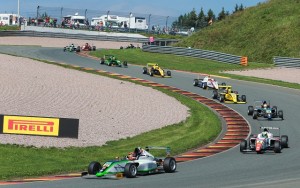
Foto: Gruppe C GmbH
But they are still great circuits that really challenge and educate young drivers. Miles of asphalt runoff may keep the repair bills down for the teams but there is nothing like an old-school venue with grass or gravel to catch the error-prone to test and improve a driver’s skills.
Jenzer believes: “In the end, for the young kids, it’s not too bad to learn to drive at Oschersleben or in Lausitzring. Lausitzring is, I think, quite a nice track. [But] okay, it’s a little bit in the middle of nowhere.”
Though Niessink agrees that Italian F4 has some inherent advantages, he, like all those Formula Scout spoke to, praised the organisation of ADAC F4.
“The weather is good, the tracks are good in Italy, it’s clear – Monza, Imola or whatever – are better probably than the German ones but still the organisation was solid. It was reliable. It was cheaper. Although there weren’t so many cars it was extremely competitive. And they lost that completely and I really don’t understand why it was impossible to turn around.”
When FIA F4 was launched as a successor to Formula Abarth as an entry-level single-seater category, smaller teams were able to compete alongside the larger teams – 15 teams and four privateers contested the inaugural ADAC F4 season. But costs have undoubtedly escalated wildly in F4 with the top teams becoming ever more professional, boasting expansive and expensive paddock setups that attract F1 junior teams to place their talents with them.
While Italian F4 has fared somewhat better, the smaller teams are long gone from the German scene. Only the privateer father-and-son Sauter team from Switzerland has managed to hang on, and is, in fact, the only team to have contested every ADAC F4 round over the last two seasons with Stephan’s son Michael in the cockpit.
“Some teams got a little bit too big, too many cars,” says Jenzer. “It’s not a good situation when the small teams have not the possibility to go racing any more because with only two cars it’s never going to work out financially for the little teams and I think F4 its very important to have a good number of teams.”
 “For sure, it is way too expensive,” agrees Rehfeld, but this is not unique to Germany. And the teams are, of course, far from blameless in offering more affluent clients ever more testing days.
“For sure, it is way too expensive,” agrees Rehfeld, but this is not unique to Germany. And the teams are, of course, far from blameless in offering more affluent clients ever more testing days.
Team owner Peter Mucke, a long-time supporter of F4 and single-seaters generally, made the point strongly to Formula Scout a year ago when he decided that it was no longer financially viable to compete in junior single-seaters.
Jenzer agrees, commenting: “I think we need to be more careful in F4 that the budgets are not going out of the roof. I think that in F4 there is also some possibility on the technical side and on the parts side that we could decrease a bit the costs. We have some issues or some things on the car where we are allowed too many things and obviously it’s performance-related and the teams with more money just go this way to use these things. I think we could keep the costs down in F4, I think we should be trying to save 10-20%.”
For a young driver like Max Reis, who chose France rather than his native Germany for the step up to F4 in 2022, cost was the overriding factor behind his decision. The centrally-run championship charges €120,000 for a full season and two tests, and even throws in a set of race overalls.
As his father, Ralph, explained, even including ancillary costs like travel, “a season in France costs around €250,000 to have a good year”. In comparison, “a season in Germany would cost €350-400,000 if you really want to be competitive, but there’s never an upper limit because you can go testing as much as your budget allows”.
Comparison with France is misleading as the FFSA can keep costs under control by running everything from one facility in Le Mans, and uses a structure which significantly restricts the set-up changes a driver can make.
Spanish F4 has retained a traditional teams-based approach and is also booming. VAR raced there, through its partnership with Monlau Motorsport, and in ADAC F4 last year and estimates that a season in the former costs around 25% less.
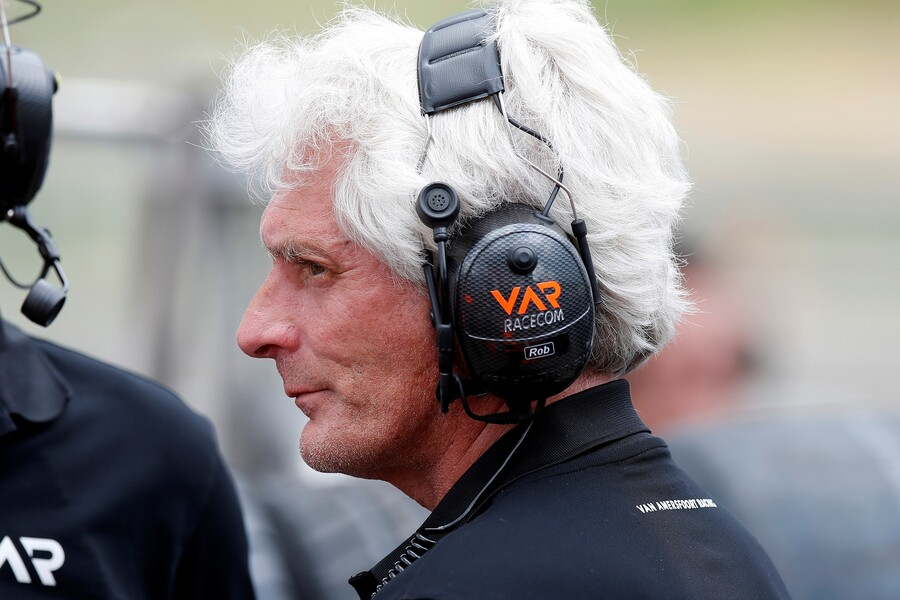
Photo: VAR
Cost may help to explain the growth of French and Spanish F4, but it does not explain why ADAC F4 has been comprehensively overtaken by an Italian series which “is basically the European championship” according to Jenzer.
There is certainly no cost advantage, indeed Germany had lower entry fees and for the northern European teams like VAR significantly lower travel costs.
Being part of the GT Masters package brought large crowds and ensured television coverage, in the same way that British F4 benefits from being on TOCA’s race weekend bill. Driver autograph sessions and the open paddock were always busy with fans.
“What is the strength of the Italian championship?” Jenzer asks rhetorically. According to the teams the answer is unequivocal – the lack of testing opportunities [in ADAC F4].
“We had absolutely zero possibility to do any testing. I think it’s a question of getting a bit better organised for testing possibilities on the German tracks. There is a very, very strong pre-season, mid-season and end-of-season testing schedule [in Italy]. The company who is organising the testing, Kateyama, offers us about 40 single-seater track days which is very easy to take part in.
“Attractive race tracks, each one at least two to three times. Obviously F4 is still the cheapest championship in which to make mileage and I think this is part of the strength of the Italian championship.”
Rehfeld shares the same view. “We have to compare – the Italians have over 40 cars, the Spanish have 34, United Arab Emirates F4, with all the travel challenges, over 32. Germany, 10. This is not just about the racetracks, for me it’s that we have no testing infrastructure. This is really a problem.
 “As teams you have not the chance to get any seat time with track days and so on. Everything goes to GT cars. I was begging the ADAC to set up a test structure and they said, ‘but then we also need to do that for GT4s’. I said ‘Why? There’s no reason’. You cannot prepare the drivers with no testing on these race tracks.”
“As teams you have not the chance to get any seat time with track days and so on. Everything goes to GT cars. I was begging the ADAC to set up a test structure and they said, ‘but then we also need to do that for GT4s’. I said ‘Why? There’s no reason’. You cannot prepare the drivers with no testing on these race tracks.”
A possible half-day test at Zandvoort in June, a current F1 circuit and one that no other F4 series visits, was lost because of advertising hoardings. A huge missed opportunity, the teams argue.
“We were fighting hard to get Thursday as a four-hour collective test because the ADAC already owned the track for this event and they said ‘no, we can’t because we have to put up all these promotional banners for the TV’,” explains Rehfeld.
Outside race weekends, he adds that even private testing in Germany “is difficult as track day organisers are just going to the GT cars because formula cars would sacrifice their income”.
However, the teams’ desire (driven, of course, by their clients who are the drivers, their parents and sponsors) for ever-more testing is hard to reconcile with concerns about cost.
“[Costs are driven up] by the fact that there are no restrictions of testing, no restrictions on tyre usage,” Rehfeld explains.
“50 test days is just too much. For sure it’s good to have these guys on each relevant race track testing but at a certain moment for F4 teams there is no stop, no winter break when you then do all the UAE races.”
Back to the central paradox, Rehfeld continues: “How to overcome that? Difficult to say. This is an open market and this is why we’re just doing it. This is what the ADAC points out now just to justify [its] decision.”
For Sauter, testing on a championship circuit is a dream. “We’ve never tested during the season at an ADAC track, except for one time at Hockenheim in 2021.”
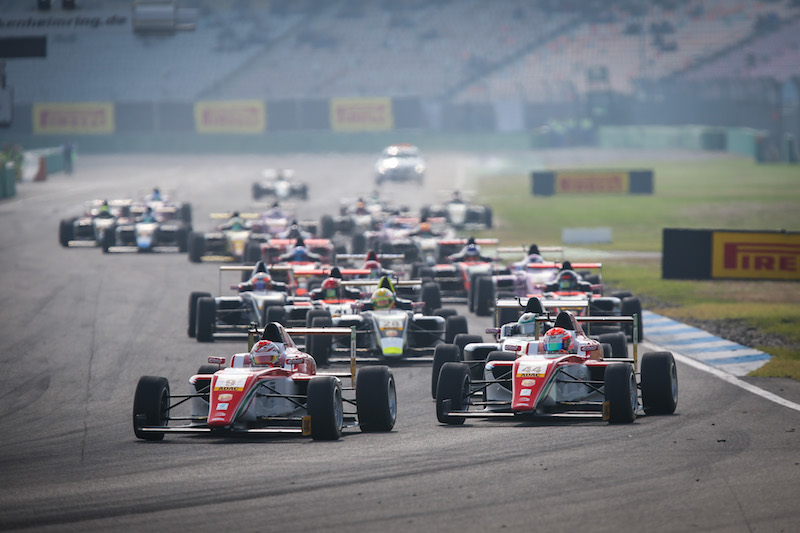 While the teams have nothing but praise for the co-ordination of the championship itself, they are critical of the lack of flexibility of the ADAC as an organiser and promoter. The last-minute decision to mandate the use of E10 fuel for 2022 was a further source of friction.
While the teams have nothing but praise for the co-ordination of the championship itself, they are critical of the lack of flexibility of the ADAC as an organiser and promoter. The last-minute decision to mandate the use of E10 fuel for 2022 was a further source of friction.
“One week before the series starts in Spa the ADAC told us that we’re running biofuel E10 and nobody has any idea how that affects tubes and fuel tanks and engines,” says Rehfeld.
“The problem with the ADAC is it’s a big, big company. It’s a club but really it’s a company. They’re not flexible and that’s the problem.”
The teams accuse the ADAC of lacking the urgency and the dynamism of a more hands-on race promoter who needs “to push to make the clients happy and to earn money”.
PHM’s owner Paul Muller adds: “you’re representing one of the largest automobile clubs in the world, very wealthy, money should not be your big problem. It feels like working with a former German bureaucracy, like Deutsche Post before they became a private company. If the ADAC would be much more bold and decisive there could be such a great impact they could have.”
With over 21 million members the ADAC is undoubtedly a huge organisation. Not surprisingly, organising a national F4 championship is not at the top of the members’ priorities.
In stark contrast to Germany, Italian F4 has always been able to draw on a steady flow of drivers who come to Italy to race in the WSK-promoted kart competitions and then transition to cars in series, like F4, also organised by the company.
So the question arises as to whether the malaise is a symptom of the wider decline of single-seaters in Germany, while GT racing continues its remarkable popularity, having replaced touring cars at the pinnacle of German motorsport.

Photo: DTM
With the DTM coming under the control of the ADAC, there would seem to be no space on the ADAC’s own weekend schedules for three F4 races, particularly if each only had a handful of starters and a small return in entry fees.
Though the ADAC strongly refutes suggestion that the death of ADAC F4 is in any way related to its takeover of the DTM, an obviously frustrated Rehfeld is sceptical. In his view, the ADAC “sacrificed the ADAC F4 to keep another senseless championship in Germany”, referring to the establishment of a ladder with DTM at the top and the remnants of GT Masters falling in below as a second-tier German GT3 championship.
“The German market becomes more and more a GT country,” he says. “Young drivers from karting go straight into GT4 because of the successful lobby work of the German manufacturers to run GT4 and save money.”
“We don’t want to lose clients already with 15, 16 or 17 to GT racing,” argues Jenzer. “I think it isn’t right for the really high-level racing drivers.
“Something must be wrong because there is only one or two German drivers doing F4 and we are in the country with the highest level of car manufacturers. You see all those German names on all the GT4 and GT3 cars, and I think single-seater racing is still by far the best school to teach young kids about the techniques of driving but something must be wrong somewhere that kids are going so early.”
“Obviously from 2015 to 2017 the German [championship] looked very strong, in 2015 we had a bit of a Mick Schumacher-mania, the people wanted to beat Mick. It was great for the sport in Germany but it was maybe a little bit over the top, maybe too many cars and the quality of racing suffered a little bit,” he adds.
Jenzer believes that the huge fields in Italy and Spain in particular are a negative step. “The quality of racing when we have more than 30 cars starts to go down. You start to have accidents, you have gravel traps, the safety car is out there and it’s not racing.”
 Rehfeld believes that a solution was within reach. “What the German F4 teams needed was an early schedule and the chance to have collective testing ahead of the events, maybe one day and then we can put a programme together even for drivers that haven’t the biggest budgets. Make a programme out of five or six race events plus one or two collective test days before, so that we are reducing logistics and personal and then we can overcome this lack of participation. This was the only thing we needed to have.”
Rehfeld believes that a solution was within reach. “What the German F4 teams needed was an early schedule and the chance to have collective testing ahead of the events, maybe one day and then we can put a programme together even for drivers that haven’t the biggest budgets. Make a programme out of five or six race events plus one or two collective test days before, so that we are reducing logistics and personal and then we can overcome this lack of participation. This was the only thing we needed to have.”
Niessink points out: “With the ADAC the problem was that the calendar comes late. You never know who will join. You never know what tracks will there be. Then you need to see if the clients are interested and it’s always hard to convince clients to sign for something which they don’t know what it is.”
The ADAC unsurprisingly takes the view that it was impossible to finalise a calendar until the teams had committed a certain number of entries. Without a calendar, the teams and drivers are unwilling to commit, and with no teams or drivers signed up it is hard for the promoter to market the championship. A classic chicken-and-egg situation.
In fact, the 2022 calendar had been published in early November but it didn’t help. Niessink understands the ADAC’s frustration when “in the end teams didn’t show up or [only for] a little number of rounds”.
Both VAR and Prema have in recent years chosen to focus on Italy, with their part-time ADAC F4 participation dictated by if they sensed that the title was within reach after their first planned appearances, as with Bearman in 2021 and Antonelli in ’22.
Niessink explains that “each team really needs to have 10 events, you can’t live from seven events; if the ADAC would still be alive then we would have done seven Italian plus three in Germany, at the most attractive tracks on the calendar”.
As Sauter says: “They [the larger teams] would rather test on the same tracks again rather than racing in a second championship.”
 Which left the ADAC facing the question of how to run a championship if the teams are only prepared to commit to three rounds as a “side programme” and cherry pick the most attractive circuits.
Which left the ADAC facing the question of how to run a championship if the teams are only prepared to commit to three rounds as a “side programme” and cherry pick the most attractive circuits.
Rehfeld maintains that there was interest “from drivers to do the German championship, where there are approximately 18-20 cars where you can race without red flags and so on,” and claims that PHM, Jenzer and Prema had been willing to commit multiple entries for 2023.
Too little, too late? Could there have been another solution?
Niessink remembers trying to bring the ADAC and WSK, the promoter of the Italian championship, together to “organize a championship with 10 rounds and then you can decide like five plus five or whatever,” but nothing came of it, largely because the Italian series had become so strong that it did not need the support of the German camp. Although the Italians are now on course to launch a European F4 series.
The ADAC has opted for a different route: a collaboration with the FFSA under which two slots will be reserved for young German drivers, and supported by the ADAC.
Reis looked at other series but plans to stay in French F4 for his sophomore year of car racing.
“Even if we had a lot of money, France would still be a good option. It’s more comparable in France – all the drivers have the same conditions and it is much more down to the driver. The amount of testing you have does not make much of a difference. Even with less money you still have a chance to show your abilities.”
But Rehfeld is sceptical about French F4’s value as a training ground for young talents given the lack of opportunities to learn about setting up a racing car. “What happens after FFSA F4?” asks Rehfeld. “It is senseless to spend €150,000 on the French championship instead of doing a proper programme with teams where they can get their individual preparations.
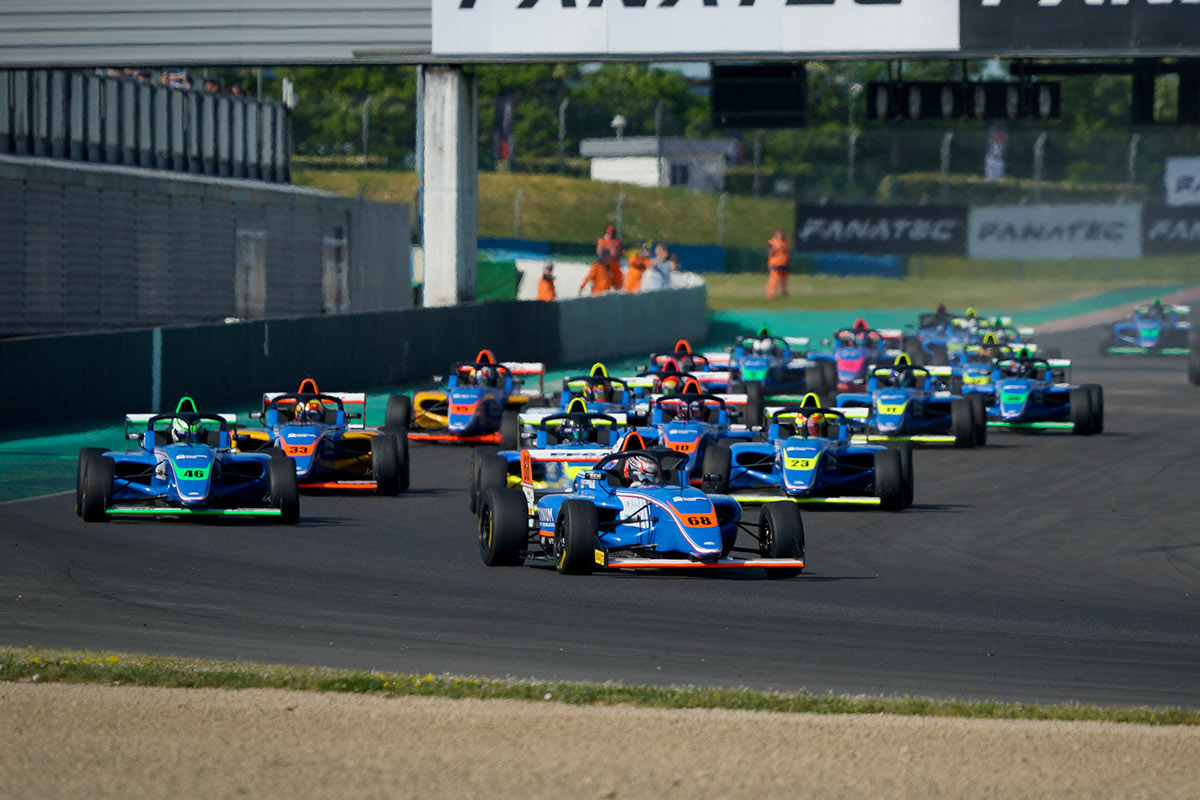
Photo: FFSA / KSP Reportages
“I don’t know what [the ADAC] are expecting for the future, because having two seats in French F4 doesn’t mean that they have in 2026 a new F1 driver in Germany,” he concludes.
The French move inevitably prompts the question as to why the ADAC couldn’t have found a budget to support and promote young German drivers in its own series. “They could do so much more,” argues Rehfeld. “There are so many low-hanging fruits, there is so much you could do to bring German drivers into the championship.”
Is this Auf Wiedersehen or Adieu? Could ADAC F4 come back? For the time being, the ADAC is committed to making the co-operation with the FFSA work and is looking at expanding that further.
For Rehfeld it is too early to say, and “too political”, but could envisage a German manufacturer potentially coming in as an engine supplier, “and with a manufacturer like Audi I think there’s maybe a chance”, he says.
The frustration on all sides is audible. It is easy to point fingers and neither the ADAC nor the teams are blameless. Ultimately, the series’ failure can be attributed to the confluence of multiple factors, the perfect storm.
Unappealing German circuits and a limit on foreign rounds made the calendar less attractive. Costs were spiralling but this was true elsewhere. Germany couldn’t match Spain for cost and had no interest in a French-style centralised structure.
Faced with a choice of a primary programme, the teams and their clients overwhelmingly favoured Italy, a tendency which became self-perpetuating, and were not willing or able to commit to two full-scale programmes.
Above all, the lack of support from German teams and drivers was fatal. With the Michael Schumacher-inspired boom that produced drivers such as Sebastian Vettel, Nick Heidfeld and Nico Hulkenberg a distant memory, the flow of young drivers coming into karting and moving up to single-seaters dried to a trickle.

Photo: BMW AG
When German teams could no longer commit either, then the writing was on the wall. And so, the series breathed its last. At least for now.
How the single-seater demise looks from further up Germany’s ladder (Ida Wood)
In addition to its entry-level series, Germany used to have a route from karting all the way into professional car racing seats for young drivers as the Formula 3 Euro Series, created from merging France and Germany’s F3 championships and which later evolved into FIA European F3, supported the DTM. The manufacturers in that series not only watched the drivers in F3 all the time, but also backed many of them too.
After European F3 ended, DTM promoter ITR introduced the GT4-spec DTM Trophy to try to replicate its model of having young drivers immerse themselves in the DTM paddock before landing professional drives in the series or elsewhere. But it had far less success in the modern DTM full of customer teams.
Marco Wittmann raced in F3 as a Volkswagen junior, then got picked up by rival BMW. He was its DTM reserve driver for a year, and has since been in its series line-up for a decade and won 18 races and two titles.
“It has changed a bit, because for me when I was young it was more the single-seater career first of all, and then you had the option to go further into like Formula 2 or F1, or you do the step to touring cars, especially in DTM,” he explains to Formula Scout in the DTM paddock.
“And it has changed a bit because you have a lot more touring car series that also when you are young [you] can drive like TCR, DTM Trophy, BMW M2 Cup. So there’s in my opinion more possibilities [in Germany] to start in touring cars, and then try to make the move later into GT World Challenge Europe, into DTM, those kinds of series. So it has separated a bit.

Photo: F3 Euro Series
“I got the opportunity [by being in F3] to do a test either with Audi or BMW. I decided for BMW, and I think it was the right call really to be not too optimistic in dreaming of to maybe drive in F1, because for me budget-wise it would have not been possible to do so. But I think it was the right step to go from single-seaters to touring cars to do the test with the DTM car, and then at the end I got first reserve drive, and a year later I was their factory driver. All-in-all, I think I did pretty much the right decisions.”
The demise of domestic single-seaters reduced accessibility to the DTM, which in combating some of the same issues as ADAC F4 actually made it harder for junior series to enjoy the same relationship with it as before. For many years under ITR, the DTM had calendars where half of the rounds were abroad and as far away as Hungary, Portugal and Russia as it sought to broaden his appeal to international investors and audiences.
European F3 could support that kind of schedule part-time, but it was impractical for a domestic series to do the same, and ITR boss Gerhard Berger told Formula Scout several times in recent years (following the failed continuation of European F3 as Formula European Masters) that having a supporting single-seater series as a feeder to the DTM was not among his goals.
Now the ADAC is in control of the DTM, it has reduced the number of rounds abroad from four to two. Both of those events for 2023 will be at tracks which ADAC F4 often visited, and it has scrapped the DTM Trophy too given it already had its own roster of series that could act as supports. A missed opportunity had ADAC F4’s hand been strong enough to still earn such a support slot, and exist…
“I think you need to keep quite a few German races because that’s the biggest fanbase we have at the moment,” says Wittmann, who proposes the DTM expands to 10 rounds so it can have a large group of German races but also races abroad.